You would expect a plant course to take field trips, right?
So what happens when you get 20+ botanists in the woods? Well, they take pictures!!
The information on geobotany is brought to you by Jane Forsyths papers, “Linking Geology and Botany…a new approach.“
Ohio is a very interesting state. Some say it’s the center of the world, others say it’s the bane of all existence. This class specifically focuses on the fact that Ohio has different areas defining different types of growth. For example, the western portion of Ohio is established by flatlands caused by erosion from limestone; the limestone rock type is susceptible to erosion creating the flat-lands, whereas the eastern portion is defined by deep valleys. Sandstone in comparison is resistant, not eroding completely causing the contrast in land such as valleys or hills.
The geology of Ohio takes the form of an arch. The deepest layer, limestone, forms the highest part of the crest and exposes its old layers in the west. Young sandstone layers are not so easily eroded and have remained away from the arch in the east. Everyone loves glaciers, right? Ohio is also composed of a glaciated area. Nothing like good ol’ scraped ground. All three layers combined to form the Teays river. The river was kind of super important for the geography of Ohio today, so much so since it flowed for 200 million years! However, as the ice age occurred the flow of the river was hindered; especially by the resistant sandstone-y areas!
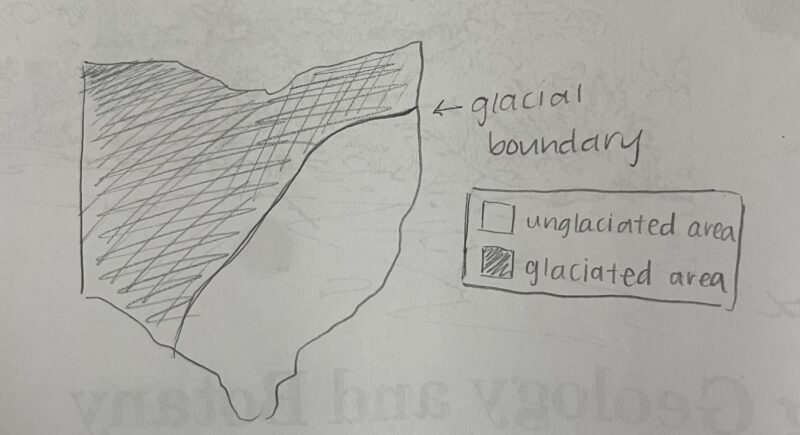
Those glaciers sure did do what huge chunks of moving ice do best, melt and erode! The products of the water and eroded ground made up a substance called glacial till. The till basically coats the ground of glaciated Ohio and is different in each of the regions. As you would expect, the easier something erodes the more likely it is to be found in till. So, in those limestone areas where limestone easily erodes, it is most certainly present in samples! In the east where there is more sandstone, there is substantially less limestone found in the till.
In terms of how the plants are propagated, we need to know about the conditions in which they live. Western Ohio, known for its limestone scapes has soil not easily drained, and creates a barrier for water. Since limestone is more soluble, it tends to be richer in lime and nutrients. Eastern Ohio on the other hand allows water to easily filter through and contains a more acidic tone. Shale under or in between sandstone layers are also impermeable and cause water to collect. Another substrate, glacial gravel is variable with range. At a higher altitude, it is dry while at lower levels it is saturated with water. Whether acidic or basic depends on the type of substrate present.
Enough talk about Ohio geobotany, on to the pics ;)))!!! Courtesy of Batelle Darby Metro Park!
Some species of plant that are found in areas high in lime stone would be:
Celtis occidentalis (Hackberry)

The hackberry is honestly pretty amazing! It is placed in urban environments since it is pretty durable and has been used for numerous things. The information about this tree that intrigued me the most is that the bark was used as a natural form of birth control for Native Americans. It is also used to prevent flooding and erosion. Cool stuff!
Quercus muehlenbergii (Chinquapin oak)
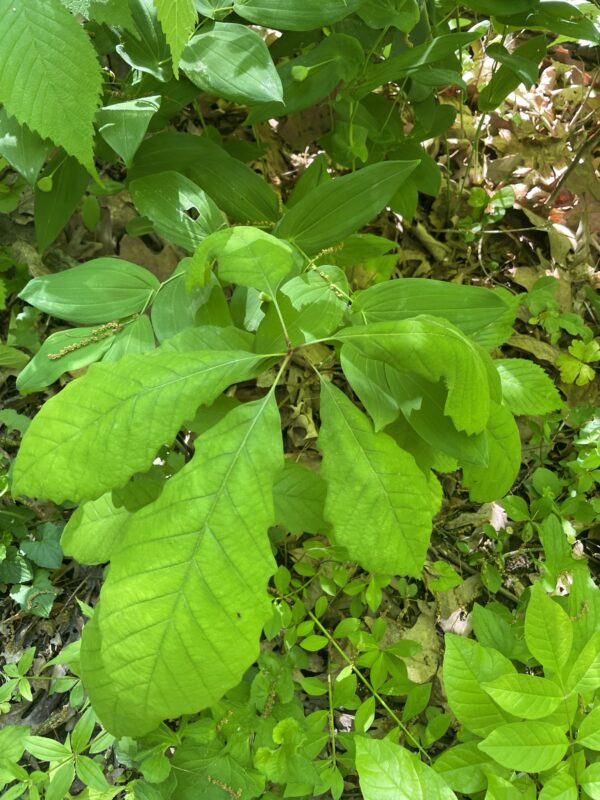
The Chinquapin oak also seems to be a tree that can grow in acidic or basic conditions, or at least be pretty tolerant. I am surprised every time I read about trees. Apparently the chinquapin oak was used as fuel for ships!
Fraxinus quadrangulata (Blue ash)
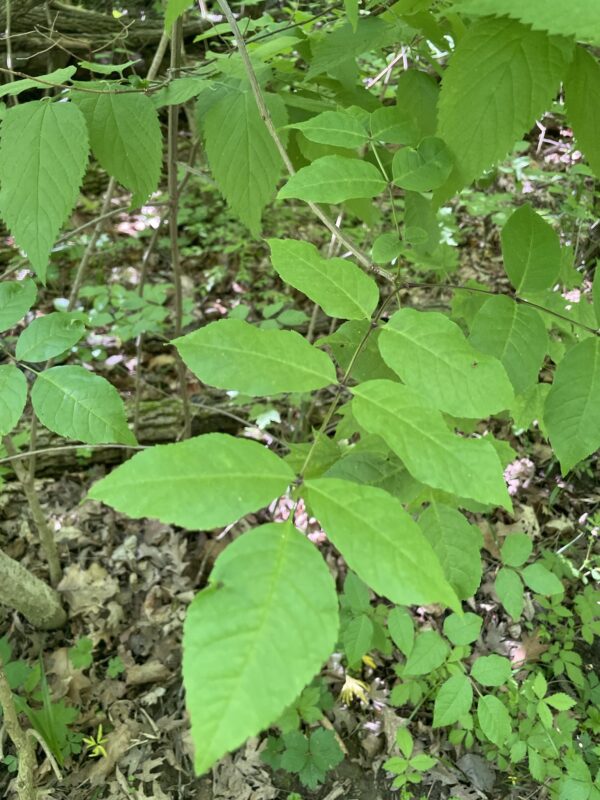
Blue ash trees are accustomed to alkaline soils but can also tolerate rocky areas. The name blue ash comes from the fact that a blue dye can be found in its bark!
Rhus aromatica (Fragrant sumac)

Apparently fragrant sumac takes on different hues, making it a nice shrub for the yard. This is also a limestone species that prefers alkaline to neutral soils. I also read that you can put its berries in tea! Sounds great to be honest!
Juniperus virginiana (Red-cedar)
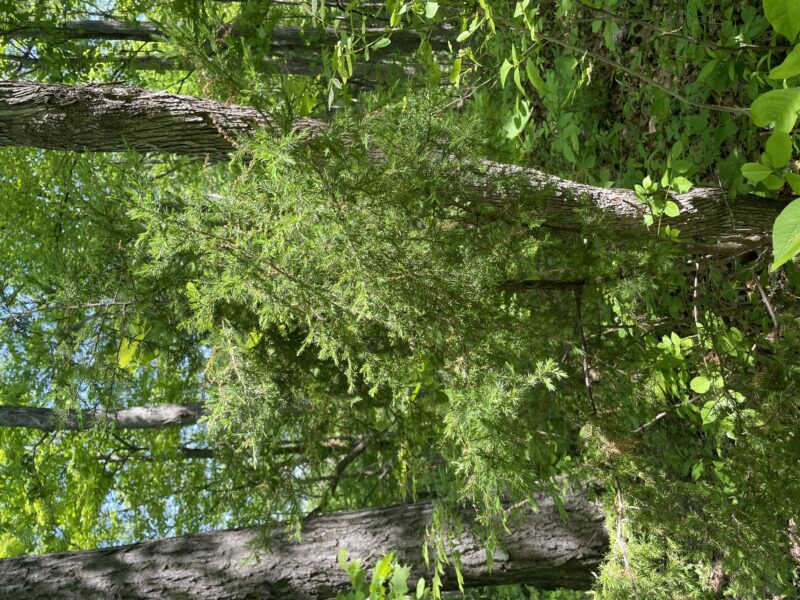
The red cedar was used for fences and furniture and is another pretty tolerant tree. I found that this tree develops a fungus if placed next to apple trees called cedar-apple rust. It is honestly pretty scary looking and I will not be placing apples next to cedars or vice versa.
Some species that were not at Batelle Darby, but would be found in sandstone/acidic conditions would be:
Quercus montana (Chestnut oak)
Oxydendrum arboreum (Sourwood)
Pinus virginiana (Scrub pine)
Tsuga canadensis (Hemlock)
Acer spicatum (Mountain maple)
For another comparison, there are some species in Ohio with pretty intriguing specificity as to where they grow. The sweet buckeye as well as hemlock both grow in unglaciated areas. The difference between the two is that the sweet buckeye only grows southeast in the unglaciated territory, while the hemlock is not as limited. The sweet buckeye also grows in high lime areas while hemlock is found northeast, and pretty much everywhere else in the unglaciated territories. An interesting plant also found in the unglaciated land is rhododenron. The spread of these plants is compared to the Teays river. They were able to populate areas using the river system!
Now introducing…..
I n v a s i v e s p e c i e s
Lonicera periclymenum (honeysuckle)
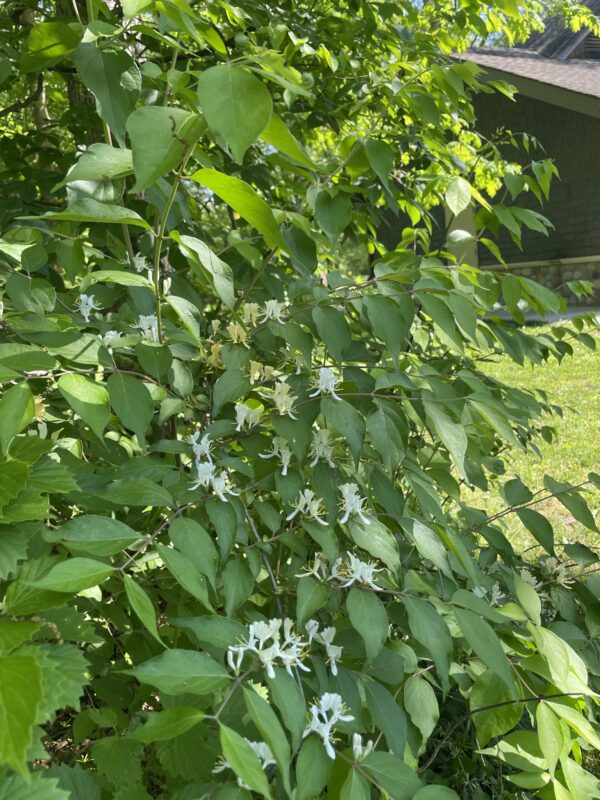
As a country kid, my parents always told me about honeysuckle. I’ll admit I really enjoyed them until I saw them everywhere. Trying to do my tree assignment, I was conflicted with honey suckle branches hiding literally anything else. It was crazy! My friends and I decided that we will eradicate the invasive species with our bare hands, and do our due justice.
Alliaria petiolata (Garlic mustard)
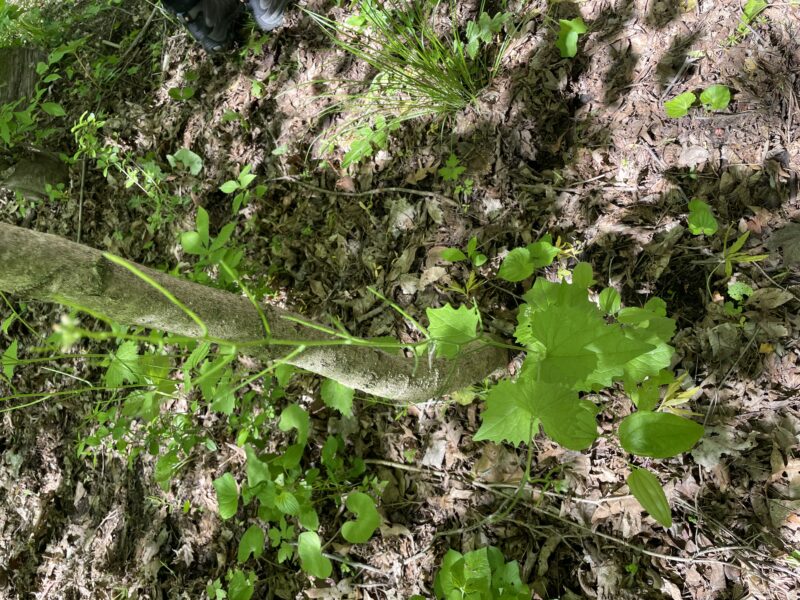
As nice as garlic mustard sounds, the most logical option is to rip this out of the ground and stomp on it. I really don’t know how much animosity I should have towards invasive species, so I apologize if I’m overdoing it. Someone told me it tastes nice though? I cannot confirm it at the moment, but maybe you could make a nice paste or powderize it. I think I’ll just boo and hiss at it like Dr. Klips recommended.
I was tasked with finding two members of the asteraceae family, so here are my documented findings!
Asteraceae
I’m going to be honest here…..these flowers are quite nice to look at, but they have some of the ugliest common names I’ve ever heard.
Erigeron (Fleabane)

It’s honestly really nice to be able to go out and identify little wildflowers. Whenever my family hiked when I was little I would always see fleabanes. I remember comparing it to other potential members of the asteraceae without even knowing! So fun! The asteraceae are described as tiny flowers in one. In the inner disk, there are tiny individual flowers (yellow) while the ray petals are whitish purple, for this fleabane specifically. Its leaves are alternate and not toothed. The reason it is named so is because it was thought to get rid of fleas!
S. obovatus (Round-leaved ragwort)

Sounds like something you’d make a potion with. I decided this was round-leaved instead of golden ragwort because there are not any large basal leaves, which is descriptive of golden ragwort. However, they both are characterized by yellow flowers with more than 7 regular parts. The leaves are also alternate and toothed. Identifying wildflowers is fun!
References:
Blue Ash. (n.d.). https://ohiodnr.gov/discover-and-learn/plants-trees/broad-leaf-trees/Blue-Ash-Fraxinus-quadrangulata#:~:text=A%20native%20of%20midwestern%20North,becoming%20upright%20rounded%20with%20maturity.
Campbell, D. (2019, March 2). Interesting facts about the Hackberry Tree. Sciencing. https://sciencing.com/interesting-hackberry-tree-6513384.html
Chinkapin Oakquercus muehlenbergii. Chinkapin Oak Tree on the Tree Guide at arborday.org. (n.d.). https://www.arborday.org/trees/treeguide/TreeDetail.cfm?ItemID=875
Eastern redcedarjuniperus virginiana. Eastern Redcedar Tree on the Tree Guide at arborday.org. (n.d.). https://www.arborday.org/trees/treeguide/treedetail.cfm?itemID=913
Fragrant Sumac. Missouri Department of Conservation. (n.d.). https://mdc.mo.gov/discover-nature/field-guide/fragrant-sumac
